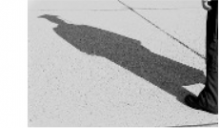 PhD defense of Julien PEYROUX on 10/28/22
PhD defense of Julien PEYROUX on 10/28/22


PhD defense of Julien PEYROUX from TIMC TrEE on october, the 28th, at 2:30pm:
" Study and application of new imaging techniques and artificial intelligence for bacterial identification. "
-
Place: Salle des thèses, bâtiment Boucherle, Faculté de Médecine et Pharmacie de Grenoble, 23 avenue des Maquis du Grésivaudan, 38700 La Tronche
 Jury:
Jury:
- MAX MAURIN, Professeur des Universités - Praticien Hospitalier, Université Grenoble Alpes, Supervisor
- AHMED LBATH, Professeur des Universités, Université Grenoble Alpes, Co-supervisor
- MURIEL CORNET, Professeure des Universités - Praticienne Hospitalière, Université Grenoble Alpes, Examiner
- CATHERINE NEUWIRTH, Professeure des Universités - Praticienne Hospitalière, Université de Bourgogne, Examiner
- SOPHIE JARRAUD, Professeure des Universités - Praticienne Hospitalière, Université de Lyon, Reporter
- CHRISTOPHE MARQUETTE, Directeur de recherche, CNRS Délégation Rhône Auvergne, Reporter
 Keywords:
Keywords:
Automation, LASER Diffraction, Identification, Bacteriology
 Abstract:
Abstract:
Since the discovery of bacteria and of their involvement in numerous human pathologies, their detection and identification are at the center of the diagnosis and treatment of bacterial infections. Nowadays, the determination of proteomic and/or molecular profiles of a strain has emerged as gold standard for the identification of pathogenic microorganisms, even if older techniques like Gram staining, biochemical assays or culture on agar media are still present in the panel of diagnostic techniques.
The appearance of new techniques is not the single point of evolution of modern bacteriology. The number of samples received for diagnosis in bacteriology laboratories is in constant increase, partly due to the ageing of population but also to the burden of antimicrobial resistance. The economic and medical aspects of bacterial infections are pushing clinical microbiology laboratories to shorten times of analysis for bacterial identification while keeping the cost of the analysis as low as possible. The arrival of the first automated systems, based on biochemical identification in the 1990s, then the use of mass spectrometry a decade later, have marked the rise of automation in bacteriology laboratories.
The analysis of diffraction pattern from bacterial colonies is based on the phenomenon of Fresnel diffraction. When a LASER is directed to a bacterial colony, it is diffracted in a specific diffraction pattern. It has been demonstrated that such diffraction patterns are specific of the shape and conformation of the bacterial colony and thus possibly of the bacterial species. This approach is therefore potentially applicable to bacterial identification. It is the objective of the Biokube Automation company which is developing a device based on this principle and has funded the PhD project presented here.
The aim of the PhD work was to establish the proof of concept of the possible use of diffraction pattern from colonies for bacterial identification and to develop a device able to realize those identification. The development of the BioKube prototype has been done in parallel with the development of a software and the implementation of a convolutional neural network allowing the classification of diffraction patterns in partnership with the company Revartis. This work led to a functional prototype allowing the detection of colonies, the acquisition of their diffraction pattern as well as their classification.
To perform bacterial identification using convolutional neural network, the training of the network on databases is required. Therefore, for this proof of concept, two databases including 6 bacterial species have been built. The diffraction patterns constituting these databases were acquired at two different incubation times (12 and 16 hours) to study the growth delay required for identification by this new approach. Classification models developed from the databases have allowed an identification of bacterial species with 95,4% and 94% of correct classification respectively after 12 and 16 hours of incubation. Established from a restricted database including only 6 different bacterial species, these results give a proof of concept of this new approach of bacterial identification but required complementary studies to validate the use of this new technique for bacterial identification.
